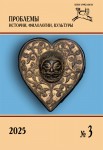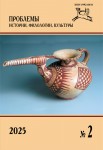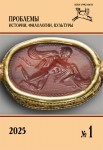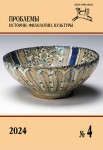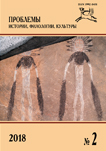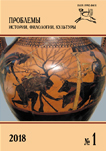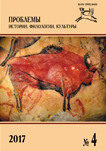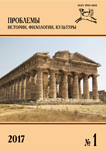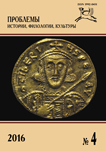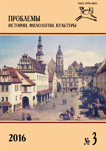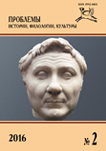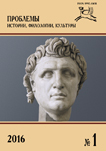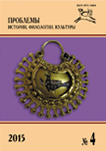Аннотация
В статье рассматривается роль, которую играли наемники в македонском войске времен Филиппа II. Определяется, что привлечение большого количества наемников и стабильная оплата их услуг были обеспечены ростом доходов македонской монархии вследствие экономических преобразований, проведенных Филиппом. Служившие македонскому царю «солдаты удачи» отличались высокими боевыми качествами благодаря специальным мерам, направленным на укрепление их дисциплины и боеспособности. Командование военными операциями, в которых участвовали отряды наемников, осуществлял либо сам Филипп, либо македонские военачальники. Формировался наемный контингент македонской армии за счет выходцев из Иллирии, Фракии и различных регионов греческого мира.
На ранних этапах развития новой «военной машины» Филипп должен был активно привлекать на службу греческих гоплитов, компенсировавших слабость еще формируемой македонской фаланги. В дальнейшем царь стал нанимать преимущественно легковооруженных «солдат удачи»: пельтастов, критских лучников и пращников. Попытки выявить особенности боевого использования наемных подразделений показывают, что первоначально они вели военные действия совместно с македонянами под командованием самого царя. После 346 г. до н.э., когда македонская военно-политическая экспансия в Греции вышла на новый уровень, отдельные отряды наемников начали более активно использоваться на второстепенных стратегических направлениях и в качестве гарнизонов, размещавшихся в подчиненных землях. Вместе с тем анализ источников позволяет утверждать, что и в последнее десятилетие правления Филиппа «солдаты удачи» входили в состав полевой армии македонского царя и принимали участие в важнейших военных кампаниях. Присутствие легковооруженных наемников облегчало штурм городов и ведение войны в горах, позволяло прикрывать боевые порядки во время полевых сражений, а также давало Филиппу возможность тратить больше людских ресурсов на развитие македонской фаланги и кавалерии гетайров.
Ключевые слова
Македония, Классическая Греция, Филипп II, наемники, военное дело, военная организация.
Йорданов, К. 2000: Политическите отношения между Македония и тракийските държави (359–281 пр. Хр.) (Studia Thracica 7). София.
Клейменов, А. А. 2013: Сообщение Птолемея о действиях таксиса Пердикки при штурме Фив войсками Александра Македонского: проблема интерпретации. Научные ведомости Белгородского государственного университета. История. Политология. Экономика. Информатика 1 (144). Вып. 25, 5–10.
Клейменов, А.А. 2015: Агриане армии Александра Великого: элитное подразделение с македонского пограничья. В кн.: В.П. Буданова, О.В. Воробьева (ред.), Цивилизация и варварство: пограничье как феномен, состояние и культурно-историческое пространство. Вып. IV. М., 227–239.
Клейменов, А.А. 2016: Лучники в армии Александра Македонского. Parabellum novum 5 (38), 10–22.
Крыкин, С.М. 1999: «Палеобалканское» фракийское общество и античный мир. В кн.: VI чтения памяти профессора В.Д. Блаватского. К 100-летию со дня рождения: тезисы докладов. М., 61–63.
Ли, Дж. У. 2015: Городская война в Классической Греции. В кн.: В.Д. Хэнсон (ред.), Творцы античной стратегии. От греко-персидских войн до падения Рима. М., 176–207.
Маринович, Л.П. 1975: Греческое наемничество IV в. до н. э. и кризис полиса. М.
Нефедкин, А.К. 2018: Ификратовы пельтасты – перевооруженные гоплиты. Parabellum novum 8 (41), 18–38.
Парк, Г.У. 2013: Греческие наемники. «Псы войны» древней Эллады. М.
Секунда, Н. 2004: Армия Александра Великого. М.
Уортингтон, Й. 2014: Филипп Македонский. СПб–М.
Фор, П. 2008: Повседневная жизнь армии Александра Македонского. М.
Шишова, И.А. 1968: Порабощение военнопленных в Греции V–IV вв. до н.э. В кн.: Д.П. Каллистов (ред.), Рабство на периферии античного мира. Л., 49–92.
Anderson, J.K. 1970: Military theory and practice in the age of Xenophon. Berkeley–Los Angeles.
Anson, E.M. 2004: Eumenes of Cardia: a Greek among Macedonians. Boston–Leiden.
Anson, E.M. 2010a: The Asthetairoi: Macedonia’s Hoplites. In: E. Carney, D. Ogden (eds.), Philip II and Alexander the Great. Father and Son, Lives and Afterlives. Oxford, 81–90.
Anson, E.M. 2010b: The Introduction of ‘sarisa’ in Macedonian warfare. Ancient Society 40, 51–68.
Ashley, J.R. 1998: The Macedonian Empire: The Era of Warfare under Philip II and Alexander the Great, 359–323 BC. Jefferson.
Berve, H. 1926: Das Alexanderreich auf prosopographischer Grundlage. Bd.I. München.
Best, J.G.P. 1969: Thracian Peltasts and Their Infl uence on Greek Warfare. Groningen.
Bettalli, M. 2013: Mercenari. Il mestiere delle armi nel mondo greco antico. Età arcaica e classica. Rome.
Billows, R.A. 1995: Kings and Colonists: Aspects of Macedonian Imperialism. Leiden–New York.
Bosworth, A.B. 1980: A Historical Commentary on Arrian’s History of Alexander. Vol. 1. Commentary on books I–III. Oxford.
Bosworth, A.B. 1988: Conquest and Empire: The Reign of Alexander the Great. Cambridge.
Braund, D. 2015: Thracians and Scythians: Tensions, Interactions and Osmosis. In: J. Valeva, E. Nankov, D. Graninger (eds.), A Companion to Ancient Thrace. Oxford, 322–365.
Brice, L.L. 2012: Greek Warfare: From the Battle of Marathon to the Conquest of Alexander the Great. Santa Barbara.
Brunt, P.A. 1969: Euboea in the Time of Philip II. Classical Quarterly 19.2, 245–265.
Buckler, J. 2003: Aegean Greece in the Fourth Century BC. Leiden–Boston.
Burckhardt, L.A. 1996: Bürger und Soldaten: Aspekte der politischen und militärischen Rolle athenischer Bürger im Kriegswesen des 4 Jahrhunderts v. Chr. Stuttgart.
Carney, E. 2015: King and Court in Ancient Macedonia: Rivalry, Treason and Conspiracy. Swansea.
Chaniotis, A. 2004: Das Antike Kreta. München.
Christov, I., Manov, M. 2011: Ancient Macedonian Sling Bullets from the Area of a Thracian Rulers’ Residence near the Peak of Kozi Gramadi. Archaeologia Bulgarica XV.1, 21–33.
Demandt, A. 2013: Alexander der Grosse. Leben und Legende. München.
Devine, A.M. 1986: The Battle of Gaugamela: A Tactical and Source-Critical Study. Ancient World 13.3–4, 87–115.
Ellis, J.R. 1976: Philip II and Macedonian Imperialism. Princeton.
English, S. 2012: Mercenaries in the Classical World to the Death of Alexander. Barnsley.
Ferrill, A. 1996: Elite Forces in the Ancient World. In: A.H. Ion, K. Neilson (eds.), Elite Military Formations in War and Peace. Westport, 31–42.
Gabriel, R.A. 2010: Philip II of Macedonia: Greater than Alexander. Washington.
Greenwalt, W. S. 2014: Infantry and the Evolution of Argead Macedonia. In: T. Howe, E. E. Garvin, G. Wrightson (eds.), Greece, Macedon and Persia: Studies in Social, Political and Military History in Honour of Waldemar Heckel. Oxford–Philadelphia, 41–46.
Griffith, G.T. 1935: The Mercenaries of the Hellenistic World. Cambridge.
Griffith, G.T. 1979: The Reign of Philip the Second. In: N.G.L. Hammond, G.T. Griffi th (eds.), A History of Macedonia. Vol. II. 550–336 B.C. Oxford, 201–646.
Hammond, N.G.L. 1979: Opis speech as history. In: In: N.G.L. Hammond, G.T. Griffi th (eds.), A History of Macedonia. Vol. II. 550–336 B.C. Oxford, 647–674.
Harris, E.M. 1995: Aeschines and Athenian Politics. Oxford.
Hatzopoulos, M.B. 1996: Macedonian Institutions under the Kings. Vol. I. A Historical and Epigraphic Study. Athens.
Head, D. 1982: Armies of the Macedonian and Punic Wars 359 BC to 146 BC. Goring-by-Sea.
Heckel, W. 1992: The Marshals of Alexander’s Empire. London–New York.
Heckel, W. 2006: Who’s Who in the Age of Alexander the Great. Malden–Oxford.
Holt, F. 2016: The Treasures of Alexander the Great: How One Man’s Wealth Shaped the World. Oxford.
Hunt, P. 2007: Archaic and Classical Greece: Military Forces. In P. Sabin, H. Van Wees, M. Whitby (eds.), The Cambridge history of Greek and Roman Warfare. Vol. I. Cambridge, 108–146.
Hunt, P. 2010: War, Peace, and Alliance in Demosthenes’ Athens. Cambridge.
Kahrstedt, U. 1953: Städte in Makedonien. Hermes 81.1, 85–111.
Kholod, M.M. 2018: The Macedonian Expeditionary Corps in Asia Minor (336–335 BC). Klio 100.2, 407–446.
King, C.J. 2017: Ancient Macedonia. London–New York.
Kosmidou, E., Malamidou, D. 2004: Arms and Armour from Amphipolis, Northern Greece. Plotting the military life of an ancient city. Anodos. Studies of the Ancient World 4, 133–147.
Lane Fox, R. 2011: Philip of Macedon: Accession, Ambitions, and Self-Presentation. In: R. Lane Fox (ed.), Brill’s Companion to Ancient Macedon: Studies in the Archaeology and History of Macedon, 650 BC–300 AD. Leiden–Boston, 367–391.
Le Bohec-Bouhet, S. 1999: L’apport macédonien de la guerre au IVe siècle avant J.-C. In: P. Brun (ed.), Guerres et sociétés dans les mondes grecs (490/322). Paris, 73–96.
Lee, J. W. 2001: Urban Combat at Olynthos, 348 B.C. In: P.W.M. Freeman, A. Pollard (eds.),
Fields of Confl ict: Progress and Prospect in Battlefield Archaeology. Oxford, 11–22.
Mattew, C.A. 2015: An Invincible Beast: Understanding the Hellenistic Pike-phalanx at War. Barnsley.
Miller, H.F. 1984: The Practical and Economic Background to the Greek Mercenary Explosion. Greece and Rome 31.2, 153–160.
Millett, P. 2010: The Political Economy of Macedonia. In: J. Roisman, I. Worthington (eds.), A Companion to Ancient Macedonia. Oxford, 472–504.
Millett, P. 2013: Winning Ways in Warfare. In: B. Campbell, L.A. Tritle (eds.), The Oxford Handbook of Warfare in the Classical World. Oxford, 46–74.
Montgomery, H. 1985: The Economic Revolution of Philip II – Myth or Reality? Symbolae Osloenses 60, 37–47.
Mossé, C. 1962: La fi n de la démocratie athénienne. Aspects sociaux et politiques du décline de la Cité grecque au IV siècle avant J.- C. Paris.
Müller, S. 2018: The Reception of Alexander’s Father Philip II of Macedon. In: K.R. Moore (ed.), Brill’s Companion to the Reception of Alexander the Great. Leiden – Boston, 72–95.
Nankov, E. 2015: The Mobility of Macedonian Army in Thrace during the Reign of Philip II and the Inscribed Lead Sling Bullets from Kozi Gramadi, https://be-ja.org/index.php/journal/ article/view/be-ja-5-1-2015-1-13.
Nawotka, K. 2010: Alexander the Great. Cambridge.
Ober, J. 1985: Fortress Attica: Defense of the Athenian Land Frontier 404–322 BC. Leiden.
Pownall, F. 2004: Lessons from the past: the moral use of history in fourth-century prose. Ann Arbor.
Pritchard, D. 2010: The Symbiosis between Democracy and War: The Case of Ancient Athens. In: D. Pritchard (ed.), War, Democracy and Culture in Classical Athens. Cambridge, 1–62.
Pritchett, W.K. 1974: The Greek State at War. Part II. Berkeley–Los Angeles.
Pritchett, W.K. 1991: The Greek State at War. Part V. Berkeley–Los Angeles.
Ray, F.E. 2009: Land Battles in 5th Century B.C. Greece. Jefferson.
Ray, F.E. 2012: Greek and Macedonian Land Battles of the 4th Century B.C. Jefferson.
Robinson, D.M. 1941: Excavations at Olynthus, Pt. X: metal and minor miscellaneous fi nds. Baltimore.
Roisman, J. 2005: The Rhetoric of Manhood: Masculinity in the Attic Orators. Berkeley.
Roisman, 2014: J. Opposition to Macedonian Kings: Riots for rewards and verbal protests. In: T. Howe, E.E. Garvin & G. Wrightson (eds.), Greece, Macedon and Persia: Studies in Social, Political and Military History in Honour of Waldemar Heckel. Oxford–Philadelphia, 77–86.
Rop, J. 2019: Greek Military Service in the Ancient Near East, 401–330 BCE. Cambridge.
Ruffing, K. 2017: The Macedonian Economy under the Argeads. In: S. Müller, T. Howe, H. Bowden & R. Rollinger (eds.), The History of the Argeads: New Perspectives. Wiesbaden, 125–135.
Russel, A.G. 1942: The Greek as a Mercenary Soldier. Greece and Rome 11.33, 103–112.
Salmond, P.D. 1994: Sympathy for the Devil: Chares and the Athenian Politics. Greece and Rome 43.1, 43–53.
Sears, M.A. 2013: Athens, Thrace, and the Shaping of Athenian Leadership. Cambridge.
Sears, M.A. 2019: Understanding Greek Warfare. London–New York.
Seibt, G. F. 1977: Griechische Söldner im Achaimenidenreich. Bonn.
Sekunda, N. 2007: The Hellenistic World and the Roman Republic: Land forces. In: P. Sabin, H. Van Wees & M. Whitby (eds.), The Cambridge history of Greek and Roman Warfare. Vol. I. Cambridge, 325–357.
Sekunda, N. 2010: The Macedonian Army. In: J. Roisman & I. Worthington (eds.), A Companion to Ancient Macedonia. Oxford, 446–471.
Snodgrass, A.M. 1999: Arms and armor of the Greeks. Baltimore.
Tarn, W.W. 1930: Hellenistic Military and Naval Developments. Cambridge.
Tarn, W.W. 1948: Alexander the Great. Vol. 2. Sources and Studies. Cambridge.
Tourraix, A. 1999: Les mercenaires grecs au service des Achéménides. In: P. Brun (ed.), Guerres et sociétés dans les mondes grecs (490/322). Paris, 201–216.
Trundle, M. 2004: Greek Mercenaries: from the late archaic period to Alexander. London–New York.
Vela Tejada, J., Martín García, F. 1991: Eneas el Táctico: Poliorcética; Polieno: Estratagemas. Madrid.
Willetts, R.F. 1977: Civilization of Ancient Crete. Berkeley–Los Angeles.




